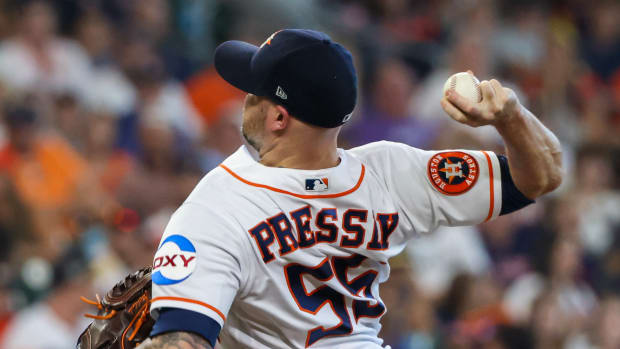Will the Reds' Ambitious Offseason Plan Work in the Loaded NL Central?
Barring a disaster of injury or underperformance or overwhelming misfortune, the 2019 Cincinnati Reds will be better than the 2018 Cincinnati Reds. That is, of course, not a high bar. The Reds have finished in last place for four consecutive seasons, and given the strength of the NL Central, they will likely have to be much better to avoid a fifth. Will they?
When it comes to mapping out the club’s struggles, there’s ample blame to go around. This is a team whose most recent win totals read like a mediocre spring forecast—brisk, not quite balmy—at 67, 68, 68, 64. The bulk of the responsibility falls on Cincinnati’s starting pitching, which has been the worst in baseball over the last three seasons by a wide margin.
Choose virtually any metric that you’d like here and almost all of them will point you to the same answer. There’s an illustrative one in FanGraphs’ WAR: From 2016-2018, 29 teams’ rotations accumulated value ranging from 16 WAR (Chicago White Sox) to 60 (Cleveland Indians). Then there’s Cincinnati, in last place with 10 WAR. Sure, WAR is an imperfect metric with different formulas and different perspectives when it comes to evaluating pitching. But the fact that any attempt at a comprehensive metric can have a team this far behind? Yikes. And in that time, Cincinnati’s rotation has a 5.12 ERA and 5.14 FIP, with baseball’s highest home run rate. Not good!
TAYLER: Rivera Makes History With Hall of Fame Election
The Reds have spent the winter ensuring that the 2019 rotation will be markedly different from 2018. In December, they traded for Tanner Roark and Alex Wood. Earlier this week, they added Sonny Gray and signed him to a three-year contract extension. (The Wood trade had the added benefit of shipping out Homer Bailey, who held the dubious honor of being the league’s worst starting pitcher last year.) Cincinnati’s three new acquisitions join Luis Castillo and Anthony DeSclafani, with a potential sixth man in Tyler Mahle.
This rotation shouldn’t be among the worst in baseball, but how far can it move up the leaderboard? Potentially quite a bit if 2019 Tanner Roark returns to a pitcher resembling 2016 Tanner Roark (151 ERA+) or 2014 Tanner Roark (131 ERA+), or maybe he’ll continue on the same path that he’s been on for the last two seasons (98 ERA+ in 2018, 96 ERA+ in 2017). Maybe Anthony DeSclafani will show that he’s made a full recovery from an elbow injury that led him to miss all of 2017 and a spate of poor performances in 2018. The biggest variable of all is Sonny Gray—who’s gone from finalist for the Cy Young in 2015 to injury-stricken in 2016 to solidly above average to 2017 and back down to well below in 2018. There’s a lot of upside for this group, but there’s a sizable gap between the ceiling and floor. Still, the floor is much higher than it was last year or the year before. On its own, that’s enough to offer some decent hope that the team is on its way to solving its biggest problem.
APSTEIN: Roy Halladay's Hall of Fame Election Is a Bittersweet Occasion
As for the rest of the team? The Reds have a strong infield and a remade outfield. In 2018, three of the four players were deserving All-Stars, and in 2019, they should benefit from the debut of top prospect Nick Senzel. 35-year-old Joey Votto’s performance dipped last year, as his offense fell to its lowest mark in several seasons, but it didn’t change so much as to make him unrecognizable or ineffective. The Reds also beefed up the outfield this winter with the addition of Yasiel Puig, and the club’s other two regulars—Scott Schebler and Jesse Winker—are each coming off strong seasons at the plate. The bullpen isn’t a strength, but Raisel Iglesias is a strong closer while Jared Hughes is coming off a career year as a setup man.
The 2019 Reds look like a different team, after what appears to be a concentrated effort by the front office. FanGraphs projects them for 80 wins, as Jeff Sullivan wrote about earlier this week. In a tight NL Central, that might not be enough to go very far. But it’s enough to make a markedly more interesting team—not quite contending for the wild card, but contending to be on the fringes of the conversation—and it should be enough for a win total that feels a little warmer, for the first time in years.


































